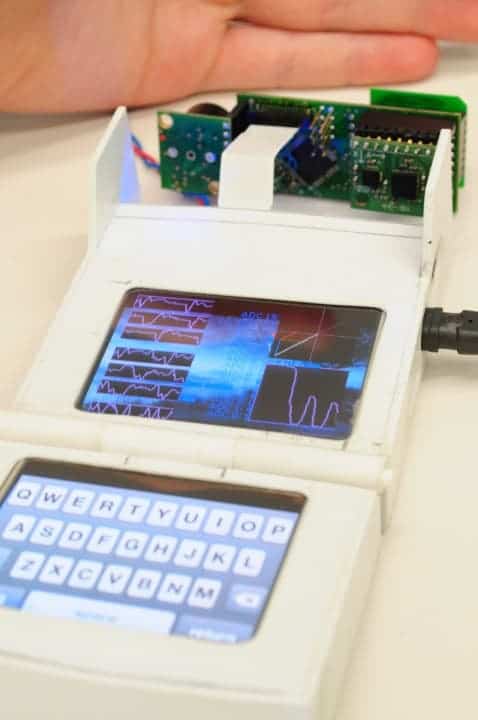Sometime at the beginning of the year I mentioned in post that once stepping into the age of Terahertz electromagnetic waves (T-rays), which can penetrate any molecule and and then interpret it for identification, we will come to know a slew of new, grand applications, from surveillance , to medical, but possibly the most interesting prospect would be the passing of Star Trek’s iconic handheld device, the tricorder, to the realm of reality. It might take a while for a full fledged tricoder to be created, not until T-ray scanner/emitters become reasonable enough, however Dr. Peter Jansen, a PhD graduate of the Cognitive Science Laboratory at McMaster University in Hamilton, Ontario, Canada, has come up with the best working tricorder-spin off so far. His handheld device is capable of sensing temperature, pressure, humidity, distances, location, motion and even electromagnetic measurements to test magnetic fields, and is open source available – anyone has access to the device’s plans and can build one at home.
“Star Trek inspired me to be a scientist” said Jansen, who has been formally working on his tricorder prototypes since 2007, but toying with the idea of making a functioning device since he was “a kid in high school.”

"If you look at the lower right widget, you can see three peaks — I've just waved my hand in front of the Tricorder three times, and it's picking up the heat. The widget auto-scales to the range of the minimum and maximum temperatures found in the recent measurements." Comments Jensen on his project's website. Here captioned is the Tricorder Mark II.
Jensen’s tricorder is envisioned by its creator as a simple, yet robust general purpose tool, like a “Swiss Army Knife”, which one could use to measure key parameters in an inspection, measure rooms, map electromagnetic fields and so on depending on the circumstance. Best of all, it’s cheap, made out of easy to order components, and the device’s plans are openly available to the public for free at the www.tricorderproject.org, where participants are invited to share their work.
Jansen has posted schematics and designs of his first and second prototypes, the Mark 1 and Mark 2, for anyone to see and build. Jansen expects to have his latest version, the Mark 4, produced for “about $200.”
“Everything you need to build one is on line” at www.tricorderproject.org, said Jansen.
Interestingly enough, X Prize Foundation recently offered a prize of $10 million to any one who can make a working Tricorder, however Jansen wasn’t aware of the prize and built a device that would suit general science purposes, instead of medical. A working tricorder would have a massive impact in the medical sector – diagnosis within seconds to minutes. The prize hasn’t been awarded yet, and the organizers caution that every device “would have to be measured on its safety and effect, like all other medical technologies.”
If you might believe this particular device isn’t that mind blowing, think about this – Jensen’s tricorder is just one of the many serious, some epoch changing, devices inspired by science fiction. Many of today’s technology was made by people who were inspired by a SciFi concept at the time, or were guided towards studying nature and science by it.
source









